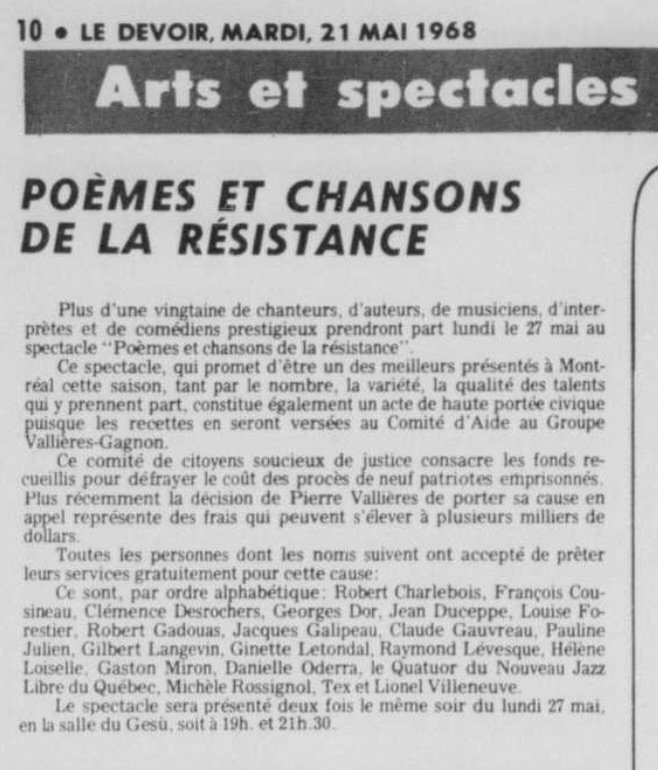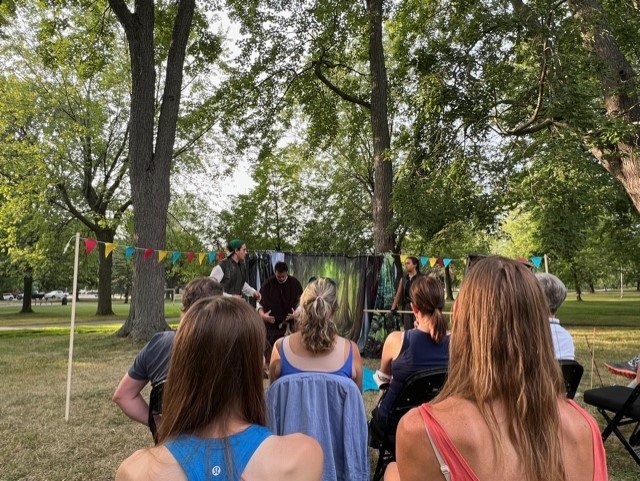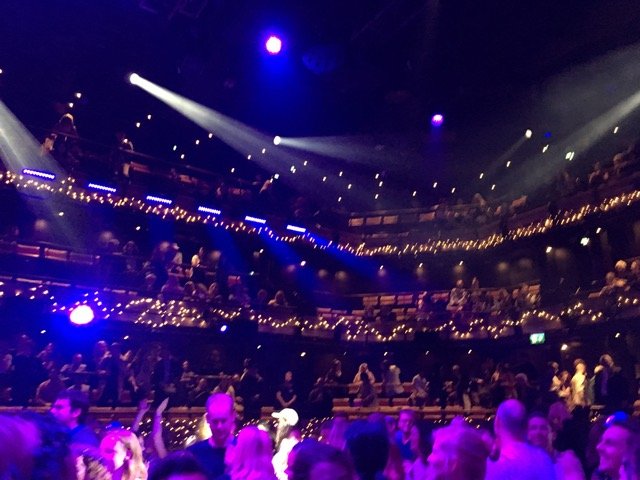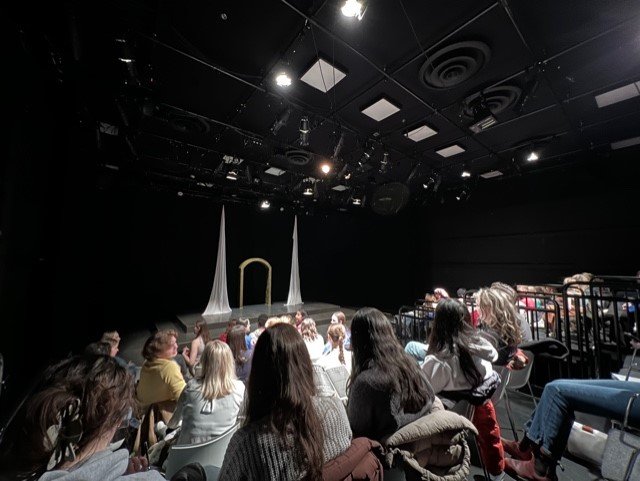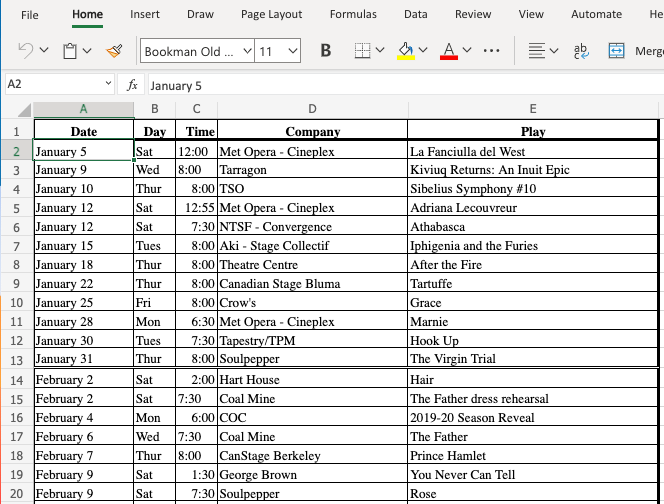The Centre Internationaliste Stanley Ryerson
BY Matt Jones
In the summer of 2007, I was taking a course at the Atwater Library in Montréal. The small community library is housed in a restored 1920s Heritage building that was once home to the Mechanics Institute of Montreal: an organization dedicated to providing after-work education for the city’s working class. As I wandered through the halls looking for my classroom, I came across a door covered with posters advertising demonstrations, activist campaigns, and political talks. Curious, I decided to try the door.
I walked into what looked like a mid-century living room with a small library attached to it. To my left was a well-worn armchair and in front of me was an aging wooden bookcase stacked with the complete works of Marx and Engels. The room, it turned out, was now home to the personal library of the historian Stanley Bréhaut Ryerson. After his death in 1998, Ryerson’s vast book collection had been moved from his home in the McGill Ghetto, and a research centre, Le Centre Internationaliste SB Ryerson/Fondation Aubin, had been founded in his name. During his life, Ryerson had used his living room library as a space for organizing, hosting reading groups and salons for activists and workers, so the former Mechanics Institute would be a fitting resting place for the collection. Since my visit, though, it has moved twice and is now lodged at the Comité Social Centre-Sud in Montréal’s Gay Village. This location is no less suitable. Founded in the 1970s, the community centre is dedicated to three objectives: “Dépanner, éduquer et lutter,” which we might translate as “mutual aid, education, and struggle.” In the early 2000s, when I encountered the space, its main hall had become a hub for anarchist and anti-war organizing.
Born in Toronto in 1911, Stanley Ryerson spent most of his adult life in Montréal, where he lived through—and wrote about—some of Québec’s most turbulent political history. His career spans from the 1930s, when he returned to Canada radicalized after completing his doctorate at the Sorbonne, to the late 1970s, when he published his final books. As his name suggests, his family was highly connected to Canada’s anglophone elite – his second middle name is Egerton, in honour of his ancestor, the notorious architect of Canada’s residential school system. However, Ryerson’s work aimed to expose the Canadian colonial project as a violent and anti-democratic system. While some aspects of his methodology may seem crudely deterministic today, in many respects he was ahead of his time. He was one of few anglophone intellectuals of his time to see value in the struggles of francophones and his 1960 work, The Founding of Canada, documents Indigenous resistance to English and French intrusion, the enslavement of Black and Indigenous peoples, and the repression of the rebellions in Upper and Lower Canada. A lifelong Marxist, Ryerson held leadership positions in the Canadian Communist Party, but often found himself in conflict with the Party’s dogmatic pro-Soviet positions (he eventually abandoned the party in 1971). His academic career was likewise fractious. He lost his teaching position at Sir George Williams University (now Concordia) in 1937 after it was discovered that he was publishing Communist Party pamphlets under a pseudonym. He didn’t return to academia until 35 years later, when he took a position at the Université du Québec à Montréal.
Ryerson’s book collection is not merely a repository of his professional interests. It offers an archive of ideas that circulated through radical communities in Québec over the forty-year period of Ryerson’s active life. Wandering through the stacks, I stumbled across all manner of defunct periodicals published in Toronto and Montreal: an issue of the IWW's (still running) newspaper The Industrial Worker from 1966, copies of Parti pris, the journal of the Quiet Revolution, La Barre du jour, Nicole Brossard’s literary journal from 1965, which aimed to revolutionize Quebec literature. Around another corner, I came across pamphlets on Québec feminism, chapbooks of radical poetry, collections of songs sung at street protests.
As I moved through the stacks, I found myself confronted with a feeling similar to what Jill Dolan calls “the utopian performative” (456). Dolan is speaking of performances that shake us out of our everyday headspace, and that stimulate a feeling that the world might, after all, be changed. She describes this utopia as a “boundless ‘no-place’ where the social scourges that currently plague us […] might be ameliorated, cured, redressed, solved, never to haunt us again” (456-7). What hits me, though, as I look over these documents is not exactly this feeling, but rather nostalgia for such a feeling. In these old pamphlets, there is a palpable utopian energy that swells up from the pages. The research centre presents an archive of that utopian spirit as it existed in the particular times and places that Ryerson lived through. It’s not that the spirit no longer exists, but today it manifests in different ways and expresses itself in different language.
Poster for Poèmes et chansons de la resistance (Poems and Songs of the Resistance), 1968. Bibliothèque et Archives Nationales du Québec
One item that stands out is a pamphlet called Spectacle : Poèmes et chansons de la résistance (Spectacle: Poems and Songs of the Resistance), which documents an evening of political poetry and music in 1968 in support of FLQ prisoners. The event, which would be repeated in 1971 and 1973, featured performances by many of the leading figures in Quebec arts at the time, including the nationalist poet Gaston Miron, the singer Gilles Vigneault, and the autonomist artist and poet Claude Gauvreau. But the event is best remembered as the moment when Michèle Lalonde first performed Speak White, perhaps the most famous protest poem in Quebec’s history. Lalonde’s poem is a bitter attack on Anglophone colonialism. Like many other Quebec radicals of her time, Lalonde tries to align the francophone struggle for self-determination in Quebec with anticolonial movements in the global south. She does this by drawing a parallel between the politics of whiteness in colonial states and anglophone linguistic imperialism in francophone Quebec. In caustic prose, Lalonde describes the imposition of English as a civilizing colonial mission. In the poem, English appears, by turns, as the language of business and the managerial class, the language of the Vietnam War, and the elevated language of Shakespeare, Milton, and Shelley, whose words don’t quite speak to the “uncultured and stammering” Quebecois people, who prefer the humiliated “chagrin” of Quebec’s poet laureate Émile Nelligan. The poem articulates a similar frustration with cultural imperialism to the Malawian poet Félix Mnthali’s 1961 poem, “The Stranglehold of English Lit.” Mnthali writes: “Your elegance of deceit,/Jane Austen,/ lulled the sons and daughters/ of the dispossessed/ into a calf-love/ with irony and satire/ around imaginary people” (172).
Michèle Lalonde performs during the Nuit de la poésie on March 27, 1970, at the Gesü theatre in Montreal. Photo by Daniel Kieffer. © 1970 National Film Board of Canada.
Lalonde’s poem has aged better than some other attempts to describe Quebec’s situation using the language of anti-colonialism (notably Pierre Vallières’ much more problematic White N* of the Americas). As Philip S. S. Howard has recently argued (in reference to Vallières), these arguments “shored up the legitimacy of the nationalist struggle of Quebec’s white Francophone majority by identifying it closely with African American liberation movements, while supplanting actual Black people in Quebec and erasing their struggles against antiblackness” (132). Lalonde is less crude that Vallières, yet she too conscripts the anticolonial struggles of the global south as support for her cause in Quebec without considering how the very whiteness of the movement in Quebec makes it so different from the deeply racialized struggles of Black Americans or African and Asian colonial situations. The fault lines in that analysis continue to mark Quebec nationalist politics today.
Newspaper article announcing the show Poèmes et chansons de la resistance (Poems and Songs of the Resistance). Le Devoir, May 21, 1968.
A couple of years ago, I showed my students at the University of Toronto Scarborough a video of Lalonde’s performance of the poem at another evening of poetry in 1970 called La Nuit de la poésie and was surprised to find they were quite moved by it. Much of the power of the work lies in Lalonde’s delivery: she is forceful, ironic, and outraged. She never breaks a smile. She looks earnestly into the dark auditorium and speaks a language of defiance. Watching the video gives me goosebumps. I find myself almost carried away by the utopian spirit of the performance. It seems almost unimaginable today that a night of poetry could be a historic event. I admire Lalonde’s command of tone and language, the way she speaks an eloquent franglais that produces sentences like: “mais quand vous really speak white/ quand vous get down to brass tacks.” I love the untranslatability of her description of English “avec ses mots lacrymogènes/ avec ses mots matraques.” She’s describing English as a language of tear gas and nightsticks, but since English doesn’t have an adjective form for those words, the phrase can’t quite sit comfortably in English. It resists.
The Centre Internationaliste SB Ryerson/Fondation Aubin is located at 1710 Beaudry Street in Montreal and maintains an active roster of study groups, film nights, and public talks. The entire catalogue of 8000 works in the collection is searchable on the Centre’s website: centreinternationalisterfa.org/
Works Cited
Dolan, Jill. “Performance, Utopia, and the ‘Utopian Performative’. Theatre Journal, vol. 53, no. 3, 2001, pp. 455-479.
Howard, Philip S. S. “Getting Under the Skin: Antiblackness, Proximity, and Resistance in the SLĀV Affair.” Theatre Research in Canada, vol. 41, no. 1, 2020, pp. 126-148.
Lalonde, Michèle. “Speak White.” [1968] Dormira Jamais n.d. http://dormirajamais.org/speak-white/.
Mnthali, Felix. "The Stranglehold of English Lit." [1961] The Penguin Book of Modern African Poetry. Fourth Ed. Edited by Gerald Moore and Ulli Beier Translated by Gerald Moore. Penguin, 2007.
Ryerson, Stanley B. The Founding of Canada: Beginnings to 1815. Progress Books, 1960. Internet Archive. https://archive.org/details/foundingofcanada0000ryer


